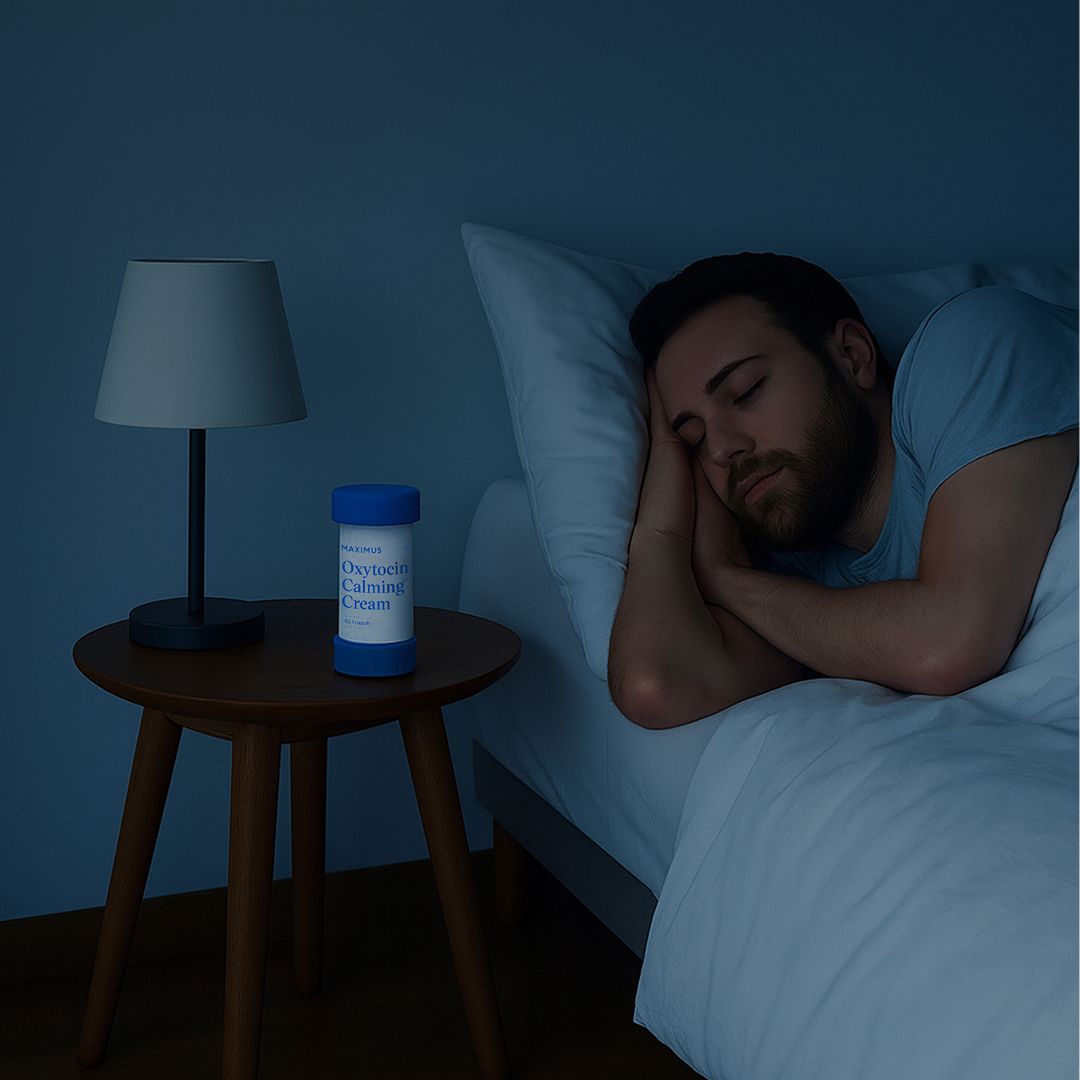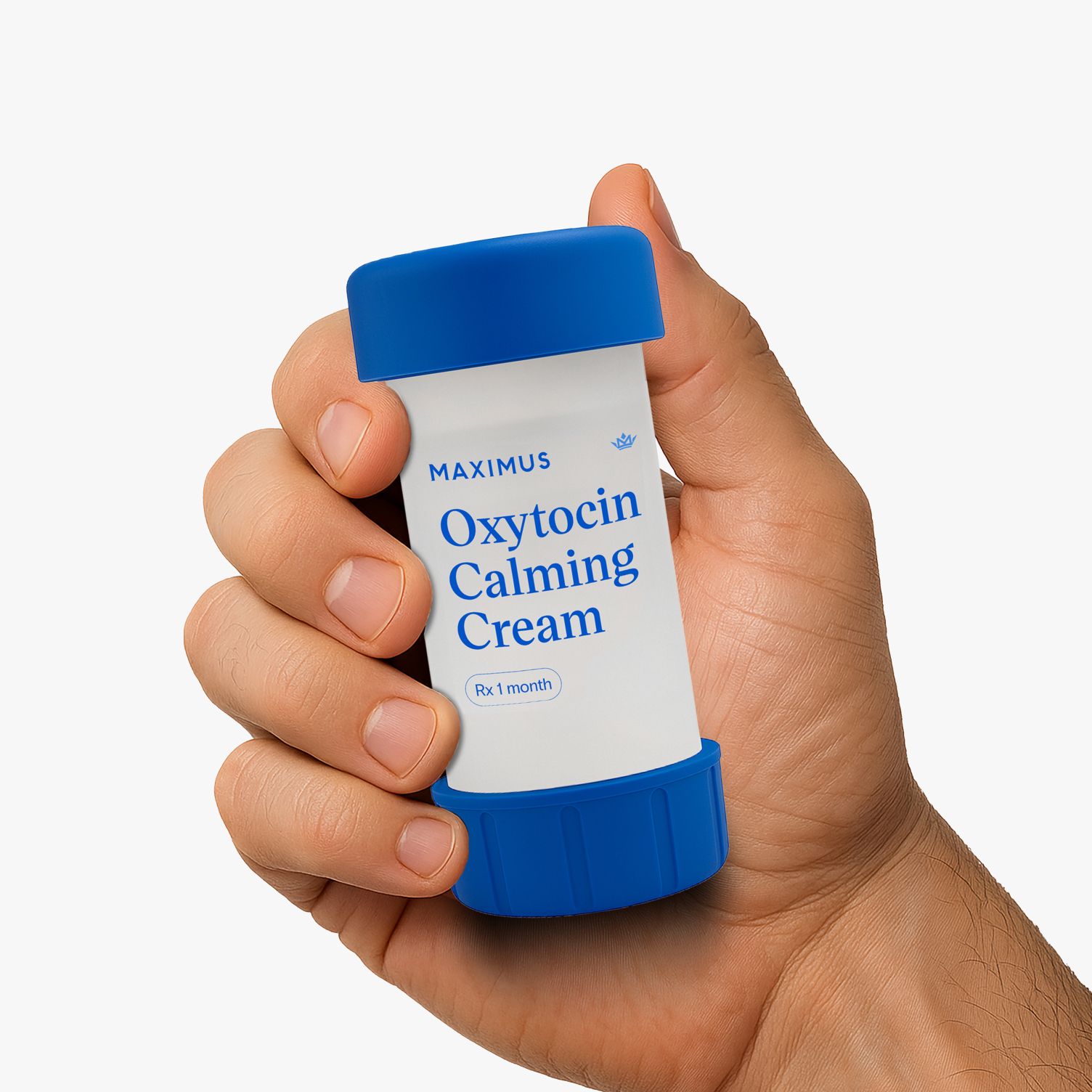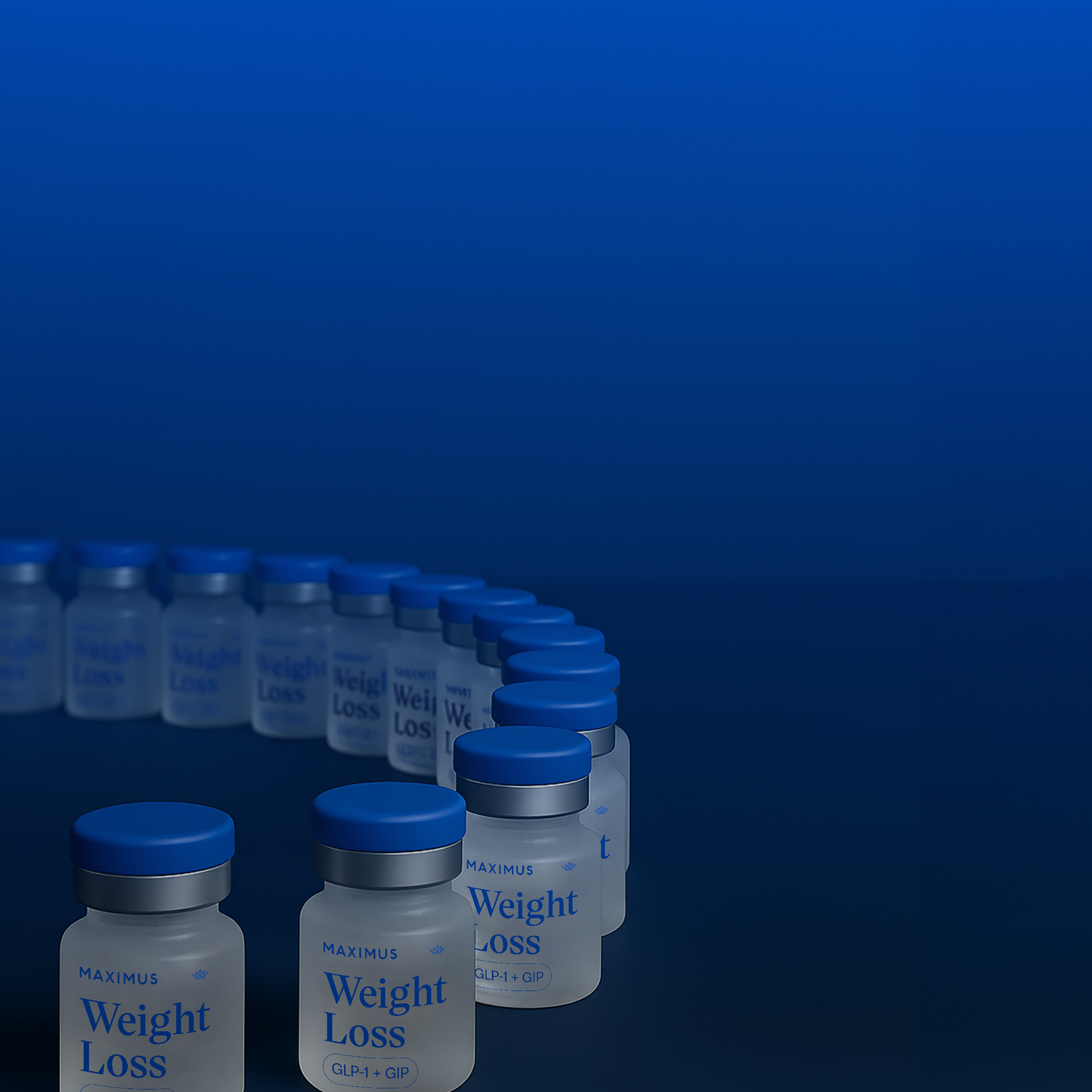By Starling Krentz, MS and Gabriel Alizaidy, MD, MS
Tirzepatide consistently beats semaglutide in clinical trials and real-world use, delivering better weight loss and often fewer side effects. Both medications mimic gut hormones that regulate appetite and blood sugar, but there's one critical difference in what they target.
Semaglutide only activates the GLP-1 receptor, while tirzepatide activates both GLP-1 and GIP receptors. That second hormone, GIP, matters significantly more than anyone realized. A new study in The Journal of Clinical Investigation reveals how GIP contributes to weight loss by identifying the specific brain circuits it targets.
The GLP-1 Story
GLP-1 (glucagon-like peptide-1) has been the star of weight loss medicine for the past decade. Your gut releases this hormone after you eat, and it talks to multiple systems throughout your body by slowing gastric emptying, helping your pancreas release insulin, and reducing appetite. Semaglutide and liraglutide became blockbuster drugs by targeting this single pathway.
The assumption was simple: maximize GLP-1 receptor activation to maximize weight loss. But tirzepatide consistently beat GLP-1-only medications despite activating the GLP-1 receptor less aggressively than semaglutide, which meant something else was contributing to the superior results.
The GIP Paradox
GIP (glucose-dependent insulinotropic polypeptide) is another hormone your gut releases after you eat. Like GLP-1, it helps your pancreas release insulin and communicates with your brain to affect appetite. For decades, researchers focused on GLP-1 because GIP's role was confusing.
Some studies showed that activating the GIP receptor reduced food intake, while other studies found that blocking the GIP receptor also led to weight loss. The mechanism was unclear.
What the Study Found
The study used advanced imaging to watch hunger neurons in real time as mice received nutrients into their stomachs. These AgRP neurons (agouti-related peptide neurons) function as your body's hunger switch, driving you to seek food when active and shutting down appetite when inhibited. The researchers watched these neurons turn on and off to answer which gut hormone flips the hunger switch after you eat.
First test: they delivered glucose to the stomach, and the AgRP neurons rapidly quieted down. Then they blocked GIP from binding to its receptor and delivered glucose again, but this time the hunger neurons barely responded and stayed active instead of shutting down. Without GIP to carry the message from gut to brain, the hunger switch didn't flip off.
Second test: they blocked GLP-1 instead and delivered glucose, yet the hunger neurons still quieted down completely. GLP-1 wasn't the signal these neurons were waiting for. Your body naturally uses GIP, not GLP-1, as the primary messenger that tells your brain you've consumed glucose, making GIP your body's natural hunger suppressant while GLP-1 handles gastric emptying and blood sugar rather than appetite suppression through these neurons.
Medications Work Differently Than Natural Hormones
While natural GLP-1 release doesn't suppress hunger neurons, pharmaceutical doses of GLP-1 medications like semaglutide do. The difference: your body's natural GLP-1 gets broken down quickly by DPP4 enzymes after release, but pharmaceutical versions are modified to resist degradation, so the hunger suppression lasts much longer. The researchers injected GLP-1 and GIP analogs at therapeutic doses and found both inhibited hunger neurons, but the combination produced significantly stronger effects than either alone. When they artificially stimulated the hunger neurons using light, they could partially reverse the appetite-suppressing effects, confirming these neurons are a critical target.
Why Tirzepatide Beats Semaglutide
GIP is the body's hunger suppressant for these neurons, while GLP-1 naturally handles gastric emptying and insulin release. Pharmaceutical doses of GLP-1 can force hunger suppression, but that's why semaglutide causes intense nausea in many patients.
Semaglutide binds more strongly to the GLP-1 receptor, powerfully activating receptors throughout the body, yet tirzepatide produces greater weight loss despite causing less nausea. The reason: GIP activates the pathway these neurons are designed for, while semaglutide forces suppression through brute force.
Tirzepatide uses both the natural GIP pathway and adds GLP-1 activation on top. Increasing semaglutide doses doesn't replicate this because you're activating a second, independent circuit through GIP. When you combine GIP and GLP-1 activation, you get stronger hunger suppression without relying entirely on GLP-1 effects that cause severe nausea, which is why tirzepatide produces a more tolerable experience with less "I feel too sick to eat" and more genuine appetite reduction.
What This Means Going Forward
Both semaglutide and tirzepatide work remarkably well for weight loss, but tirzepatide consistently produces better results. Now we know why: GIP and GLP-1 work through distinct pathways to suppress hunger. GIP directly regulates hunger circuits through the pathway your body naturally uses, while GLP-1 provides additional suppression through pharmacologic override. Dual agonism combines both mechanisms, producing superior weight loss with a better side effect profile than GLP-1 alone.
----
Disclaimer: The contents of this article, including, but not limited to, text, graphics, images, and other information, is for information purposes only and does not constitute medical advice. The information contained herein is not a substitute for and should never be relied upon for professional medical advice. The content is not meant to be complete or exhaustive or to be applicable to any specific individual's medical condition. You should consult a licensed healthcare professional before starting any health protocol and seek the advice of your physician or other medical professional if you have questions or concerns about a medical condition. Always talk to your doctor about the risks and benefits of any treatment. Never disregard or delay seeking professional medical advice or treatment because of something you have read on this site. Maximus does not recommend, endorse, or make any representation about the efficacy, appropriateness, or suitability of any specific test, products, procedures, treatments, services, opinions, healthcare providers or other information contained herein. Maximus is not responsible for, nor will they bear any liability for, the content provided herein or any actions or outcomes resulting from or related to its use.
----





